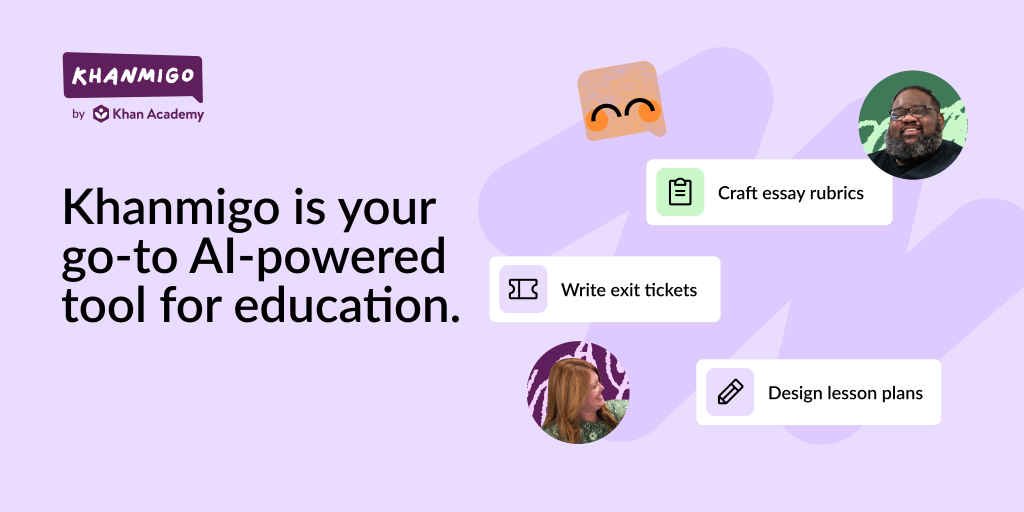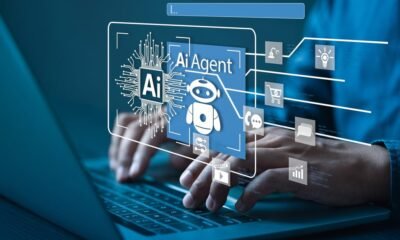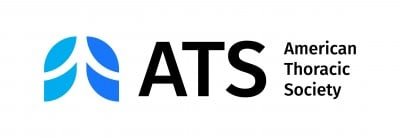Education
How Khan Academy plans to safeguard education’s future

When Sal Khan first launched Khan Academy in 2008, it was little more than a collection of YouTube math tutorials recorded for his cousins. Today, it’s a global nonprofit serving over 150 million registered users across 190 countries. Now, with artificial intelligence rewriting the rules of technology, Khan Academy’s founder and CEO believes AI could become the most powerful educational tool of our time, if it’s handled with care.
✅ Thank you for completing the survey!
That belief was at the center of a wide-ranging conversation on The Verge’s Decoder podcast, where Sal Khan talked about the risks, opportunities, and future of AI in classrooms.
Also read: GenAI effect: US college students are questioning value of higher education due to AI
AI tutors in the classroom
Khan Academy has long stood at the intersection of technology and learning. During the COVID-19 pandemic, it became a lifeline for millions of students and teacher
s suddenly thrust into remote learning. That moment, Khan recalls, showed the organization both the promise and the limits of digital education.
The next frontier is Khanmigo, an AI-powered tutor built on large language models. Designed to act less like a search engine and more like a thoughtful guide, Khanmigo can walk students through math problems step by step, role-play historical figures, and even help teachers draft lesson plans.

But Khan is adamant: “The goal isn’t to replace teachers, it’s to empower them,” he told Decoder. The AI is meant to supplement human instruction, not supplant it.
Building trust in AI-powered education
For all its potential, AI in education comes with serious concerns: privacy, bias, reliability, and the risk of over-dependence. Khan is acutely aware that without trust, even the best tools will fail.
Also read: Study mode in ChatGPT explained: How students can use AI more effectively
That’s why Khan Academy has focused on transparency and ethical design. Student data isn’t sold or used for advertising. The AI is tested rigorously to avoid giving harmful or misleading responses. And unlike many consumer AI apps, Khanmigo is deliberately constrained, it won’t solve a math problem outright, but will instead guide a student through the logic behind it.
“Trust is the currency of education,” Khan said on Decoder. “If we lose that, nothing else matters.”
How AI could democratize tutoring worldwide
Khan’s optimism stems from a belief that AI can finally tackle one of education’s oldest inequities: the lack of one-on-one tutoring. For centuries, individualized instruction has been available only to the wealthy. If AI can provide high-quality tutoring at scale, it could narrow achievement gaps worldwide.
The challenge is making that promise real. Khan Academy has partnered with schools, states, and districts to test Khanmigo in classrooms, ensuring the tool is accessible to underserved students and not just a perk for those who can pay.
“We see AI as a way to lift everyone,” Khan explained. “It can’t just be a luxury.”
As AI technology advances, so do the ethical dilemmas. Some educators fear that AI tools could deskill teachers, reduce human interaction, or worsen digital divides between well-resourced and underfunded schools.
What’s next for AI education
Khan Academy’s strategy is to move deliberately – scaling slowly, working with schools, and putting educators at the center of the process. The organization is committed to testing Khanmigo in real-world classrooms, refining its safety features, and ensuring that it helps teachers rather than replacing them.
Looking ahead, Khan believes that AI could transform education for the better, provided it’s rolled out responsibly. With guardrails in place, AI tutors could personalize learning for every student, lighten the load for teachers, and make quality education more accessible globally.
“Technology can either erode trust or deepen it,” Khan said on Decoder. “Our job is to make sure it’s the latter.”
For Khan Academy, the mission is clear: build tools that scale the human touch, not erase it. And in doing so, safeguard the future of education at a moment when trust in AI has never been more important.
Also read: Google’s Guided Learning versus ChatGPT’s Study Mode: Which is better?
Education
ATS Breathe Easy – Lessons Learned from AI in Medical Education
Education
Education report calling for ethical AI use contains over 15 fake sources

AI language models like the kind that power ChatGPT, Gemini, and Claude excel at producing exactly this kind of believable fiction because they first and foremost produce plausible outputs, not accurate ones. They always generate a statistical approximation based on patterns absorbed during training. When those patterns don’t align well with reality, the result is confident-sounding misinformation. Even AI models that can search the web for real sources can potentially fabricate citations, choose the wrong ones, or mischaracterize them.
“Errors happen. Made-up citations are a totally different thing where you essentially demolish the trustworthiness of the material,” Josh Lepawsky, the former president of the Memorial University Faculty Association who resigned from the report’s advisory board in January, told CBC, citing a “deeply flawed process.”
The irony runs deep
The presence of potentially AI-generated fake citations becomes especially awkward given that one of the report’s 110 recommendations specifically states the provincial government should “provide learners and educators with essential AI knowledge, including ethics, data privacy, and responsible technology use.”
Sarah Martin, a Memorial political science professor who spent days reviewing the document, discovered multiple fabricated citations. “Around the references I cannot find, I can’t imagine another explanation,” she told CBC. “You’re like, ‘This has to be right, this can’t not be.’ This is a citation in a very important document for educational policy.”
When contacted by CBC, co-chair Karen Goodnough declined an interview request, writing in an email: “We are investigating and checking references, so I cannot respond to this at the moment.”
The Department of Education and Early Childhood Development acknowledged awareness of “a small number of potential errors in citations” in a statement to CBC from spokesperson Lynn Robinson. “We understand that these issues are being addressed, and that the online report will be updated in the coming days to rectify any errors.”
Education
Seiji Isotani’s Mission to Humanize AI in Education
Newswise — As Penn GSE expands its leadership in AI and education, newly hired associate professor Seiji Isotani adds a vital perspective shaped by decades of work in Brazil, Japan, and the United States.
A pioneer in intelligent tutoring systems, Isotani develops AI tools that adapt to the needs of students and teachers—especially in under-resourced settings. But for him, technology is never the starting point.
In this Q&A, he reflects on the childhood experience that launched his career, the importance of human-centered design, and why responsible AI must begin with understanding the people it’s meant to serve.
Q: What originally drew you to the field of educational technology?
A: Working with educational technology holds special meaning for me, inspired by a personal experience. As a child, I struggled in school. I couldn’t read or work with numbers at age 7, and some even thought I had a learning disability. Fortunately, my mom, a talented public school math teacher, and my dad, a professor at the University of São Paulo, worked with me every night until I caught up. Eventually, we discovered that my difficulties were due to issues with vision, communication, and hearing.
Once those were addressed, everything changed. I went from falling behind to becoming one of the top students, especially in STEM subjects.
That transformation lit a fire in me. I wanted to help others experience that same change, and I started to help other students with their struggles during class. When I got my first computer at age 11, I was instantly in love. I taught myself to program and quickly realized that I could use this technology to help other students learn in ways that worked for them. That spark led me to educational technology, and it still fuels my work today, particularly in one of my main research areas: intelligent tutoring systems.
Q: Your work explores the use of AI to improve learning. What’s one way you think AI could genuinely help students or teachers?
A: One of the most exciting ways AI can make a difference is by acting as a true partner for teachers, helping them do what they already do well or even improve their practices, but with more insight and support. By deeply understanding teachers’ needs (as explored in my recent study) and developing AI-powered tools like those in the MathAIde project, we’ve shown that even in resource-constrained environments, teachers can receive timely, actionable feedback about their students’ learning. They can use AI to plan lessons more efficiently and get personalized suggestions for tailoring activities to each learner’s needs.
At the same time, students benefit from more engaging and personalized learning experiences, including gamified elements that adapt to their interests and help keep them motivated (as evidenced in another study of mine). It’s not about replacing teachers or increasing students’ cognitive offload. It’s about giving both teachers and students “superpowers” so they can shine and show all their might.
Q: What drew you to join the faculty at Penn GSE?
A: Honestly, I couldn’t imagine a better place to do the work I care about. Penn GSE is a powerhouse when it comes to rethinking education through innovation. I’ve admired the school’s deep commitment to investing in the field of AI in Education to create real-world impact, especially in K–12 education.
The opportunity to contribute to and grow with Penn GSE, by helping build a strong program that not only trains the next generation of AI in education leaders but also shapes the global conversation on how AI can support more accessible and meaningful learning experiences, is incredibly exciting to me!
Penn is already leading the AI in education agenda across top universities in the U.S. and around the world, and the chance to be part of that movement is truly inspiring. After meeting the faculty and students, it became crystal clear to me: this is where I want to be to help change the world. I’m especially excited to collaborate with such a passionate and visionary community made up of people who, like me, are committed to making education more human, more engaging, and more inspiring through the thoughtful and responsible development and use of AI.
Q: You’ve worked in both Brazil and the U.S.—how have those experiences shaped your perspective on education and innovation?
A: Working in Brazil and the U.S. has certainly shaped my perspective, and adding to my journey, I’ve also had the opportunity to collaborate closely with researchers and schools in other countries, such as Japan, where I completed my doctoral studies. These experiences across very different educational systems and cultures have given me the flexibility to embrace multicultural environments, understand diverse classroom contexts, and navigate the complexities of working in both low- and high-income communities.
What I’ve learned is that challenges in education are not exclusive to any one region. Whether I am working in a rural school in the Amazon, an urban district in the U.S., or a high-tech classroom in Japan, I encounter students and teachers who struggle, whether due to lack of infrastructure, insufficient support, or systems that do not fully meet their needs. These shared struggles, though expressed differently across contexts, have helped me become more connected to what really matters: understanding people and their goals. This is why a human-centered approach is at the heart of my work. For me, it’s not just about gathering data or training AI models. It’s about what we can do with AI and data to help people learn better, teach better, and feel more empowered. Designing AI in education means listening deeply to communities, co-creating solutions with them, and ensuring that the tools we develop truly serve the people they are meant to support.
Q: What’s something surprising or lesser known about your research that you enjoy sharing with others?
A: One thing that often surprises people is that I tend to avoid starting my projects by advocating for the use of AI. Even though I’m deeply involved in AI in education, I actually try to avoid introducing AI at the beginning, especially when the goal is to improve public policy through technology.
In fact, when people ask me, “How can we use AI to improve education policy?”, my first response is usually a question: “Do you already have a shared vision for the kind of education you want in your country or community? Do you have an understanding of the needs of your teachers, principals, students, and families?”
If we can’t answer those questions clearly, it’s very hard to use AI effectively, because we don’t yet know why we need AI or how it should be developed or used to actually serve the people it’s intended to help.
Thus, whether I’m working with a ministry of education or a local school, I begin by engaging deeply with people on the ground. And sometimes, AI is not the silver bullet; in fact, it often isn’t. What tends to work best is not AI alone, but a thoughtful combination of AI with practices rooted in the learning sciences and well-established educational strategies (e.g., structured pedagogy). Nothing flashy, just what works.
Q: When you’re not thinking about research, how do you like to spend your time?
A: Outside of work, my favorite role is being a dad. Spending time with my 4-year-old son and 8-year-old daughter brings me so much joy. They constantly remind me that the true wonders of the world live in small discoveries, in the curiosity to learn about everything, and in the joy of sharing what you’ve learned with those you love.
I have also practiced Judo for about 35 years. In my early days, I trained professionally for competitions and was fortunate to win state and national championships a few times. Although I had to stop training during the pandemic and haven’t returned to a dojo since, I hope to resume my practice in Philadelphia. In the meantime, I still enjoy “training” and playing Judo with my kids at home.
Finally, I also love trying new foods, exploring different cultures, and occasionally watching anime, a fun reminder of my “otaku” days back when I lived in Japan.
Q: Are you more hopeful or cautious about the role of AI in education over the next decade—and what gives you that outlook?
A: You tell me. Just kidding! I’m definitely more hopeful, but in a grounded and thoughtful way. AI is already shaping our society, and it holds incredible potential to transform education for the better, especially when it’s designed responsibly with people and for people. I’ve seen what happens when we get it right: teachers feel empowered, students feel seen and supported, and learning becomes more meaningful, engaging, and joyful.
I have a strong sense that once we move past this initial wave of hype and the overemphasis on the technology itself, we will enter a new phase. That is when the real breakthroughs in AI for education will emerge, focused on truly serving educational needs and empowering communities.
-

 Business2 weeks ago
Business2 weeks agoThe Guardian view on Trump and the Fed: independence is no substitute for accountability | Editorial
-
Tools & Platforms1 month ago
Building Trust in Military AI Starts with Opening the Black Box – War on the Rocks
-

 Ethics & Policy2 months ago
Ethics & Policy2 months agoSDAIA Supports Saudi Arabia’s Leadership in Shaping Global AI Ethics, Policy, and Research – وكالة الأنباء السعودية
-

 Events & Conferences4 months ago
Events & Conferences4 months agoJourney to 1000 models: Scaling Instagram’s recommendation system
-

 Jobs & Careers2 months ago
Jobs & Careers2 months agoMumbai-based Perplexity Alternative Has 60k+ Users Without Funding
-

 Podcasts & Talks2 months ago
Podcasts & Talks2 months agoHappy 4th of July! 🎆 Made with Veo 3 in Gemini
-

 Education2 months ago
Education2 months agoVEX Robotics launches AI-powered classroom robotics system
-

 Education2 months ago
Education2 months agoMacron says UK and France have duty to tackle illegal migration ‘with humanity, solidarity and firmness’ – UK politics live | Politics
-

 Funding & Business2 months ago
Funding & Business2 months agoKayak and Expedia race to build AI travel agents that turn social posts into itineraries
-

 Podcasts & Talks2 months ago
Podcasts & Talks2 months agoOpenAI 🤝 @teamganassi




















